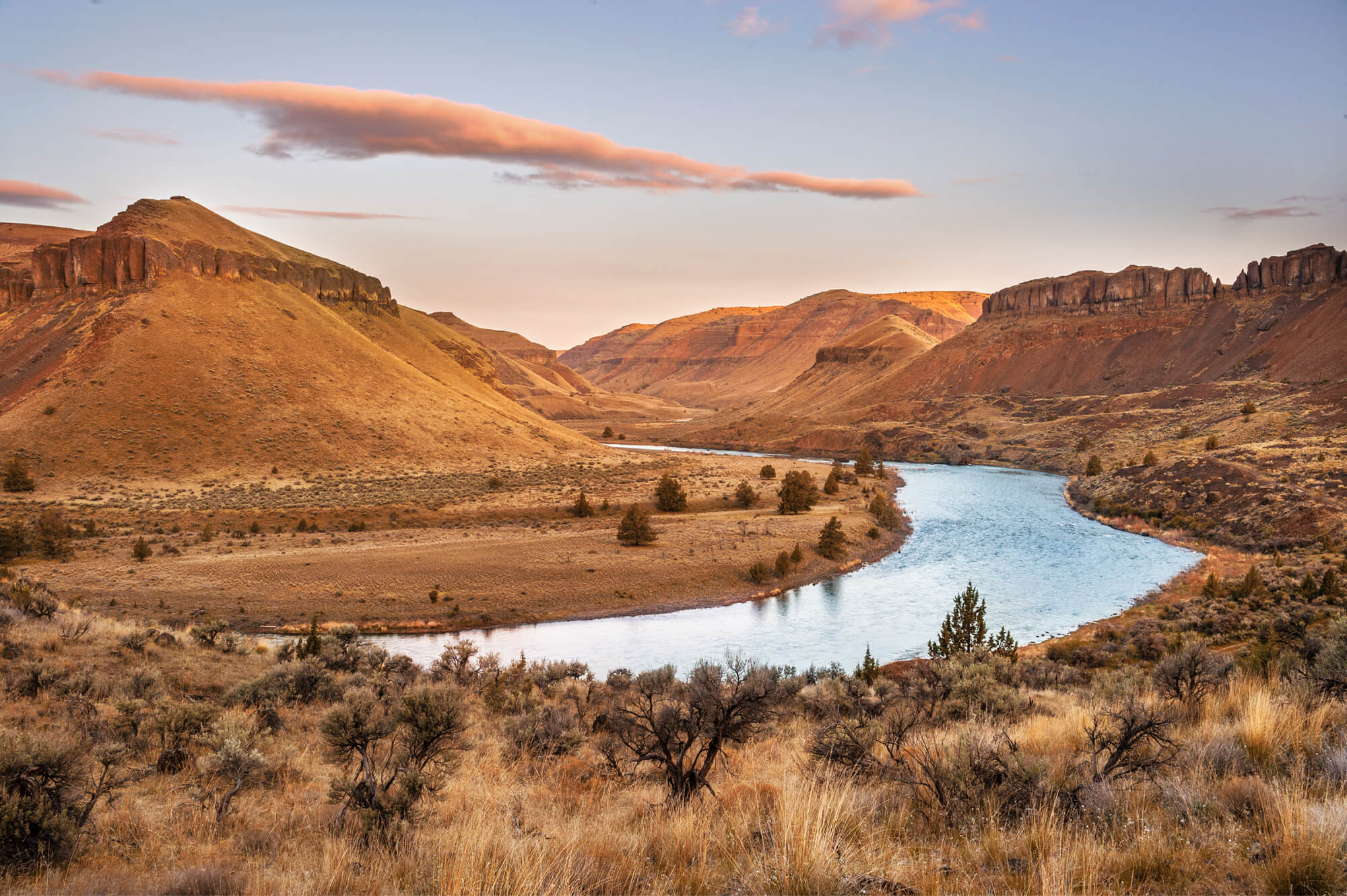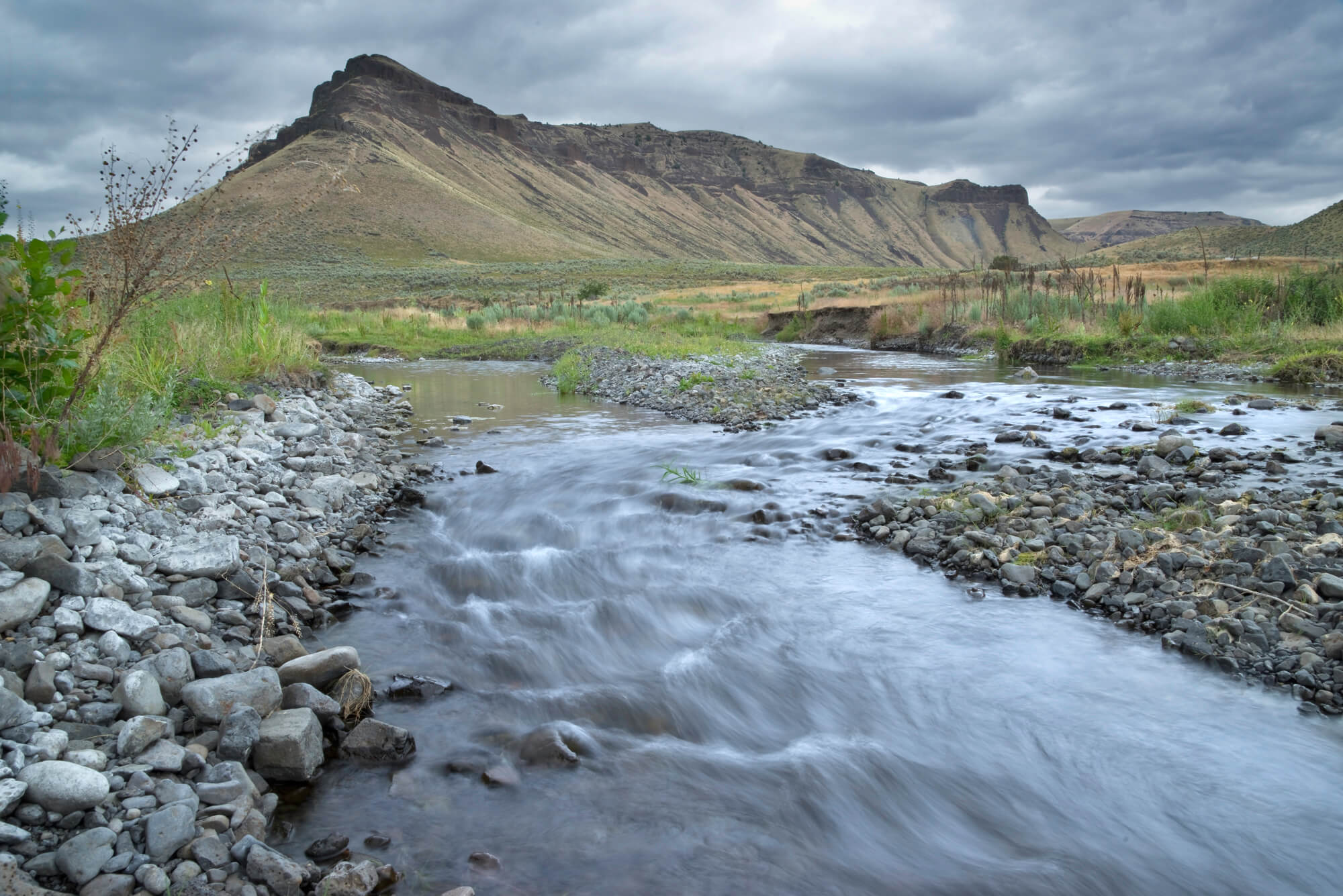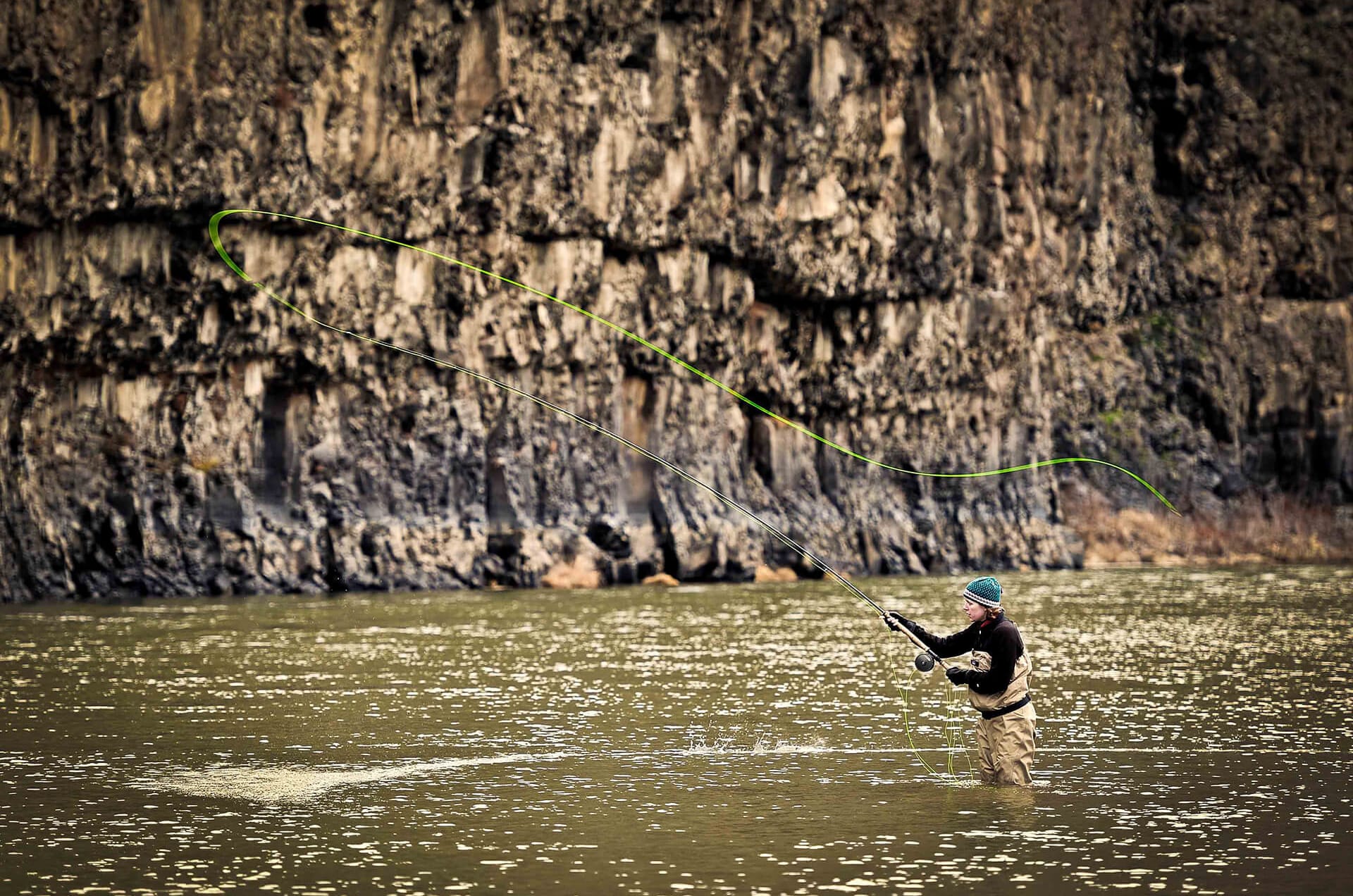Reliable, cold water—it’s everything in the arid shrub-steppe of north-central Oregon, where the John Day River reigns over a wild landscape that is disappearing across the West. Dam-free for all of its 280 miles, the John Day is home to the healthiest populations of wild summer steelhead in the Columbia basin. To survive, these steelhead rely on a handful of cold tributary streams that flow steadily into the John Day, even during summer months. Chief among these is Thirtymile Creek, the largest and most important steelhead spawning tributary on the lower river.
To protect these vital waters, WRC acquired two adjacent ranches along Thirtymile Creek and spanning some of the finest sagebrush country in the West. In 2014, we purchased the 19,088-acre Rattray Ranch, which includes 10 miles of John Day River frontage, the lower four miles of Thirtymile Creek and a 10,798-acre BLM grazing lease. Then, in 2018, we purchased 2,944 acres of the Campbell Ranch, which spans another five miles of Thirtymile Creek. All told, our efforts protected the lower nine miles of this critical tributary and a critical stretch of the main-stem John Day while setting the stage for much-needed habitat recovery. Together the properties support Oregon’s largest herd of California bighorn sheep and are home to diverse wildlife, including Rocky Mountain elk, mountain lion, pronghorn, burrowing owl and sagebrush lizard.
Our efforts at Thirtymile Creek are also great news for anglers, hikers, hunters and other recreationists. That’s because Rattray Ranch at Thirtymile Creek now provides the first and only public river access on a remote, 70-mile stretch of the Wild and Scenic John Day River. To boat this stretch of river—one of the most scenic multi-day wilderness floats in the Pacific Northwest—formerly required paid private access. Had we not purchased the Rattray Ranch, this access could have been closed entirely.
The project also opens new public access to 78,000 acres of rugged backcountry within the BLM’s North Pole Ridge and Thirtymile Creek Wilderness Study Areas, public lands that were previously inaccessible except by boat. In summer 2019, we completed conveyance of both ranches to the BLM, which now manages all 11,154 acres as a haven for native fish, wildlife and visitors who may now explore this spectacular slice of Oregon along a wild, free-flowing river.
For up to date access information please visit the Bureau of Land Management's Thirtymile Creek visitor information brochure.
Funding for the John Day Project was made possible through generous contributions from multiple sources, including Lynn and Jack Loacker, Doris Duke Charitable Foundation granted through The Nature Conservancy, The Collins Foundation, The Carol and Velma Saling Foundation, The Conservation Alliance, The Burning Foundation, Giles W. and Elise G. Mead Foundation, The Cabana Fund of The Oregon Community Foundation, The Autzen Foundation, The Flyfisher Foundation, The Oregon Community Foundation, Evermine, Meyer Memorial Trust, the Jubitz Family Foundation, and with the generous support of many additional individuals, foundations and businesses.
This project was also made possible thanks to access funding from the Land and Water Conservation Fund, which helped WRC create new recreational access to over 78,000 acres of public land near Thirtymile Creek. LWCF is America's most important federal conservation and recreation program and has protected critical open space and improved outdoor recreation opportunities in nearly every state and every county in the U.S.













